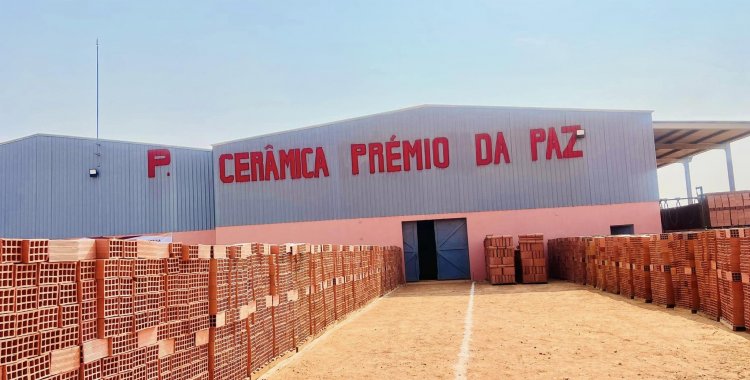According to a statement from the government of the province of Bié, to which VerAngola had access, the (re)inauguration ceremony took place in the commune of Chipeta, in the municipality of Catabola (Bié) and was witnessed by the governor of Huambo, Secretaries of State for Public Works, Military Industry, the Inspector General of National Defence, the Director General of the Social Security Institute of the Angolan Armed Forces, Senior Officers of the Angolan Armed Forces, as well as members of the government and guests.
On the occasion, the governor of Bié, Celeste Adolfo, expressed her satisfaction with the inauguration of the factory, which is an initiative of the Social Security Institute of the Angolan Armed Forces.
For the provincial governor, the factory "will not only generate employment and income for families in the region, but will also boost civil construction and the emergence of other industries".
According to the governor, the factory "represents a significant step forward in reducing the costs of construction materials, which will benefit the local community and boost the economic development of the area", the statement reads.
In turn, retired lieutenant general Cristóvão da Silva Júnior, general director of the Social Security Institute of the Angolan Armed Forces, assured that the factory has "great potential to contribute to the growth of the local economy and to the financing of the Social Security system of the Angolan Armed Forces".
He considered it important to create measures that aim to "improve production efficiency and the quality of equipment", so that the ceramics factory can reach its "maximum capacity and thus increase revenue for the Social Security financing fund".
"The reopening of Cerâmica Prémio da Paz is seen as a milestone in the effort to modernise and become self-sufficient in the construction industry in Angola, which will have a positive impact on the local economy and make Catabola a hub for the production of materials essential for urban and rural development", the statement reads.
The Minister of National Defence, Veterans and Former Combatants also spoke at the event, and advocated for increased production.
"There is a need to work harder to increase the production capacity of the 'Prémio da Paz' ceramics here in Chipeta, so that profits are good, and future income will allow for the opening of other ceramics factories under the FAA in other regions of the country, which are linked to the Lobito Corridor", he said, quoted by Jornal de Angola.
It should be noted that the aforementioned factory was opened in 2011, but ended up being shut down in 2013 due to technical issues. A little over a decade later, it is 'recovering' again with its sights set on exports, given that it plans to export 65 percent of its production to neighbouring countries such as Zambia and the Democratic Republic of Congo, and the rest of the production (35 percent) will be used to supply the national market.
According to the Jornal de Angola, the factory has two production lines, one dedicated to the manufacture of bricks (capable of producing 25,000 bricks per day) and the other reserved for the daily manufacture of 5000 various ceramic products, such as roof tiles.
In addition to the two production lines, the factory also has three mills, two ovens, three laminators and a dryer/oven, and was already operating on an experimental basis before being reopened.
According to Angop, 126 people (two expatriates) work at the factory, whose ceramics, worth six million dollars, will also be sent, along with Bié, to Huambo, Cuando Cubango and Cuanza Sul.







